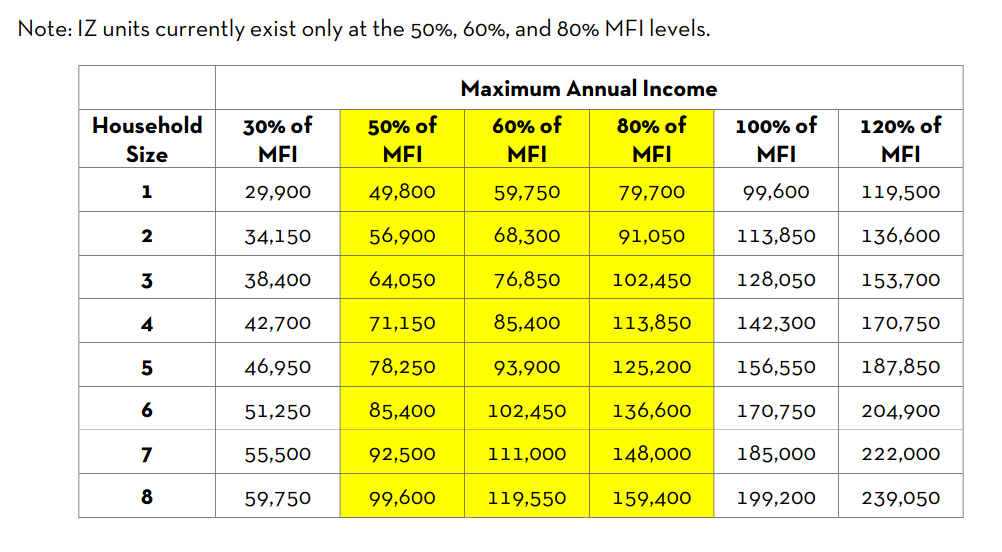Sources:
* Report, DC Mayor Muriel Bowser, “Inclusionary Zoning Annual Report for Fiscal Year 2021” dated January 9, 2023, https://lims.dccouncil.gov/downloads/LIMS/52021/Introduction/RC25-0002-Introduction.pdf
* Article, Washington Business Journal, “D.C.'s inclusionary zoning program not benefiting lowest-income households, report finds” by Tristan Navera, February 6, 2023, https://archive.ph/ghkMx

IZ Chart source: https://dhcd.dc.gov/sites/default/files/dc/sites/dhcd/publication/attachments/2022-6-24%20IZ%20ADU%20price%20schedule.pdf
2. Beyond the IZ fail, recent reports show that DC's Housing Production Trust Fund has been similarly serving for the most part moderate income single professionals making $60,000+/yr. And, this fact stands in the face of law requiring that the majority of the HPTF monies are to subsidize housing for the lowest income earners (aka those making the living wage annually or less).
Sources:
Sources:
* DC Zoning Commission Case Nos. 11-03, A-K (https://app.dcoz.dc.gov/Home/ViewCase?case_id=11-03)
* Tweet, DC for Reality, “Let's not get it confused. When anyone (the Mayor; Developers, anyone) touts a project has 'affordable housing it may likely mean housing for individuals making $80-$120k a year as currently defined! DC needs to do better” dated February 10, 2023, https://twitter.com/dc4reality/status/1624111925494706177
- It's these stats that show why in DC “affordable” housing isn't actually affordable and why many of our residents are vulnerable to displacement and why many folks have to set up homes in tents.
- There are solutions to DC's malformed definition of “affordability” — one such is the Social Housing model. Another, perhaps faster solution is for DC policy to be clearly shifted to define affordability as a percentage of DC-only incomes.
